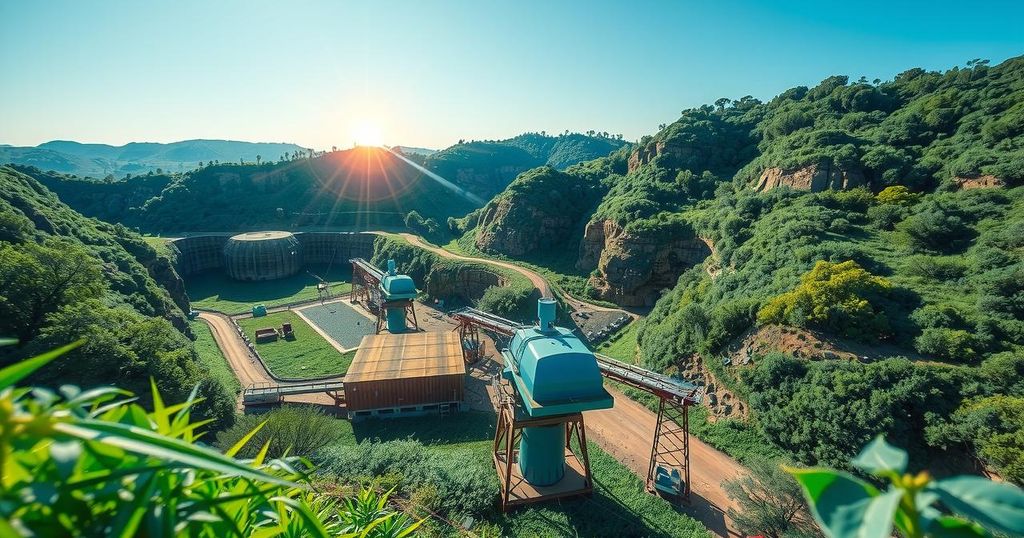Malawi’s Kayelekera Uranium Mine is set to reopen in 2025 with a $200 million investment from Lotus Resources. This comes amid a global resurgence in nuclear energy demand. The mine aims to leverage existing infrastructure and secure contracts while addressing environmental and community concerns.
Malawi is set to revive its Kayelekera Uranium Mine with a significant investment of MK350 billion, or about $200 million, from Australian company Lotus Resources. This development comes as the world increasingly looks to nuclear energy as a clean and stable energy option amid a growing demand for such alternatives. The mine, which has been inactive since 2014, is projected to restart operations in the third quarter of 2025.
Nuclear power is seeing a resurgence after having been sidelined for years. Its zero-emission properties make it an appealing alternative to fossil fuels. This renewed focus on nuclear alternatives was underscored during COP28 in 2023 when 22 nations committed to tripling their nuclear capacity by 2050. By 2024, that commitment grew to 31 countries, driving up the demand for uranium significantly—prices have more than doubled since 2020.
Previously, Kayelekera was among Malawi’s top uranium producers, supplying over 1,000 tonnes annually. With existing infrastructure making it ready to restart, the mine is positioned well to tap into the current market trends. Lotus Resources has already secured contracts to sell approximately 3.8 million pounds of uranium oxide to multiple buyers, including U.S. firm PSEG Nuclear.
Lotus’s confidence in the project is also reflected in their financials, having committed over $200 million in infrastructure with an additional $38.5 million raised since 2022. This puts Kayelekera among the most prepared uranium projects for resuming operations in Africa. The company emphasizes the importance of local employment, noting that over 90% of the former workforce was Malawian.
In May 2025, the Malawi Atomic Energy Regulatory Authority granted preliminary approval for the mine to restart, although it comes with conditions for ongoing environmental oversight and community engagement. This requirement aims to ensure that the local population is involved and informed as the project progresses.
However, not everyone is convinced. Local civil society organizations, especially the Natural Resources Justice Network, have raised concerns over potential radiation exposure, waste management issues, and the need for equitable community benefit-sharing. They are calling for more transparency and engagement before full-scale operations begin.
Even though the uranium processed at Kayelekera won’t directly energize Malawi’s power grid, the economic benefits from the project could be substantial. In a country where only about 15% of the population has reliable access to electricity, effective management of these resources could create significant ripple effects throughout the local economy.
The Kayelekera Uranium Mine in Malawi, backed by a $200 million investment from Lotus Resources, is poised for a significant comeback. As the global focus shifts towards nuclear energy, Malawi’s project could not only reinvigorate local employment but also provide economic benefits in an area with limited electricity access. However, challenges remain, including environmental concerns and the need for community engagement before the operations ramp up.
Original Source: www.nyasatimes.com






